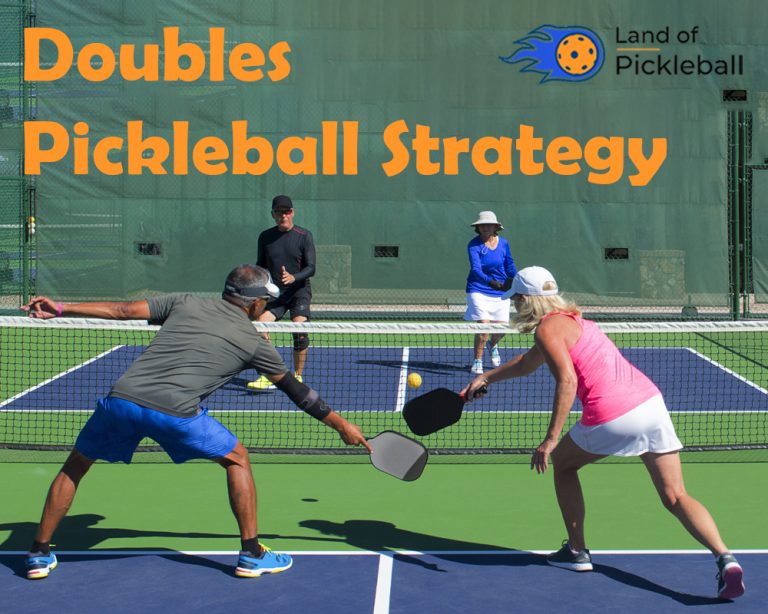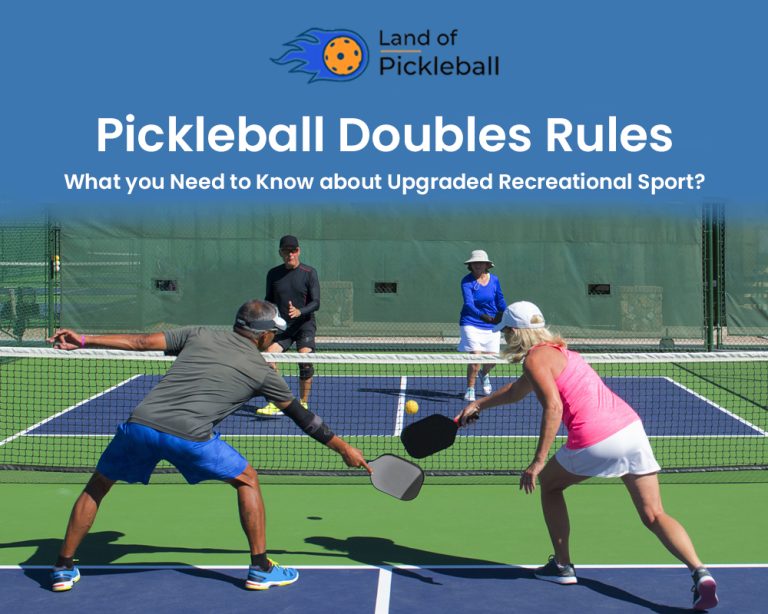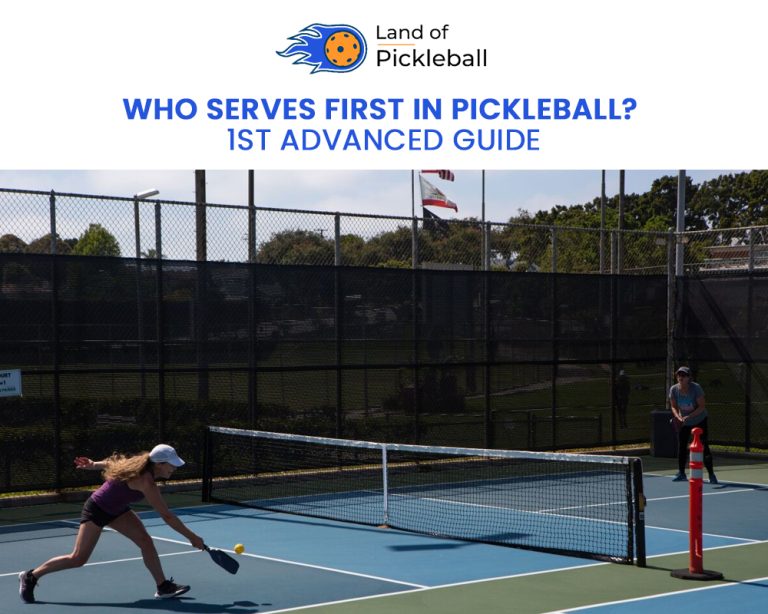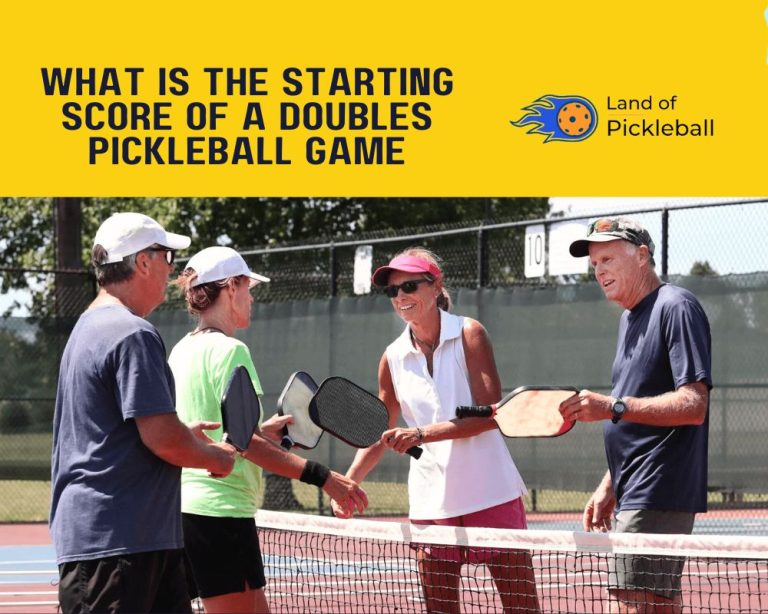2024 Guide to Legal Pickleball Serve Rules
Legal pickleball serve: underhand, paddle below the waist, upward arm movement; options include volley and drop serves; new rule for volley serve – one hand, bare hand (no glove).
Learn the rules, techniques, and strategies to serve below the waist level effectively.
When the pickleball ball and Paddle’s contact point is below the player’s waist level, this service is considered the legal pickleball serve.
Pickleball Sport
Since 1965, Pickleball sport gained tremendous popularity in recent years, attracting players of all ages and skill levels. One crucial aspect of pickleball is the service, which sets the stage for each rally. You’re proficient in making the scores by performing the best rally shot. Regarding this, you need to delve into the concept of a legal pickleball serve, techniques, and tips, and explore the rules & strategies. These prospects can assist you in mastering the serve shots in the match.
Grab your Paddle; let’s get started.
Types of Legal Pickleball Serve
There are two major types:
Both types have specific playing techniques but result in a successful legal pickleball serve.
Underhand Serve
The Legal Pickleball Serve is considered the most player-friendly and easier to play than all other serves. Players must perform it with a lower trajectory on the net and slower speed.
However, standing behind the court’s baseline and maintaining your feet parallel to each other (can be slightly staggered). Settle your paddle facing downwards and to your waist level. You can drop or toss it now for 6 inches, not higher of it. After that, allow it to hit forward before bouncing on your courtside.
Underhand serve must land into the courtside diagonal from where you’re playing it.
Forehand Serve
The common service form includes the stand on the right corner and gazing toward the opponent’s courtside.
Thus, you can start your game by throwing up the ball and striking it with your paddle forward across the service line, diagonal into the opponent’s court.
Notably, you must set your foot behind the baseline while serving. Both feet will remain in the service court before hitting your ball.
Definitive Serve Legality
It usually depends on the following:
Serving Position
Your serving position plays a vital role in delivering an effective service.
As our recommendation, you should stand with a shoulder-width stance, balancing the weight evenly on both feet. Moreover, as a server player, you must set your position slightly towards the centerline, which makes a better angle for the serve. Ultimately, this stance allows greater reach and control when striking the ball.
Legal Serving motion
As the server player, your paddle head is lower; likewise, your ball and paddle’s contacting point is below your waist.
Executing the smooth serving motion is essential to maximize the effectiveness of the serve. You may start by holding the Paddle comfortably, ensuring a firm but not overly tight hold. Once you’re ready to play the serve shot, bring the Paddle back behind you while keeping your non-dominant hand holding the ball at waist level. Now, swing the Paddle forward, making contact with the ball below the waist and following through with the motion.
Service Faults
Playing pickleball, certain faults can make your serve illegal, and that ends up in losing your score points or a side-out happens. However, these can be:
Learning how to avoid faults and maintain your legal Pickleball serve is crucial.
Double bounce Rule
The additional element works as the best strategy to play the legal Pickleball serve. Though both serving and receiving teams must let the ball bounce once on each side before attempting to volley the ball. This rule of Pickleball has eliminated the dominancy of making powerful serves and encourages playing your best from the beginning of the game.
Criteria of the Legal Pickleball Serve
Whether you’re an advanced or novice player, there are following certain fundamental points to consider about the standard (volley) serve:
These seven criteria are essential to know for playing the legal Pickleball serve. So, you may know that hitting the ball diagonally across the net to the opponent’s service area is termed the serve in Pickleball.
To execute your legal Pickleball serve, you must stand behind the baseline, underhanded, striking the ball below the waist level, and keep your foot in touch with the ground until you strike your ball. However, you must go through the basic rules of Serving in Pickleball (volley & drop serve rules).
Volley Serve
It is executed by hitting the ball directly without letting it bounce with the court surface. This shot is performed by backhand or forehand movement. Hence, an appropriate volley serve comprises these components:
Drop Serve
This serve allows striking the ball while following its bounce on the court’s playing surface, leading to a drop serve. You can play this shot by backhand or forehand motion. Remember, there are no limitations on the number of bounces your ball may make or the explicit region of the court where it can bounce. Though there are the following vital components of this service:
Strategies to play the strong legal Pickleball Serve
FAQs
Conclusion
Mastering the legal pickleball serve is the most significant point in winning the match. However, you need to know the accurate criteria for performing the serve. You may become a powerful and consistent serve performer by knowing serving rules and playing strategies. However, these dedicated playing techniques lead to make you a formidable weapon in your pickleball arsenal.







